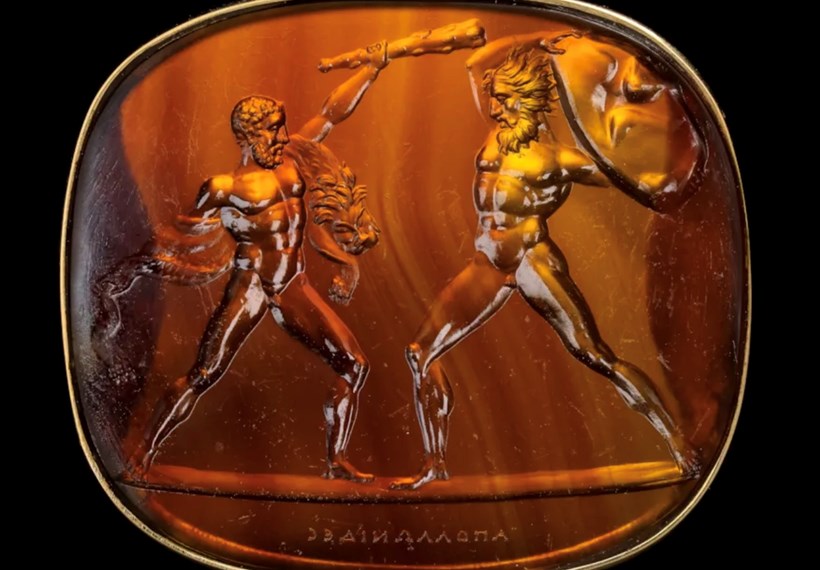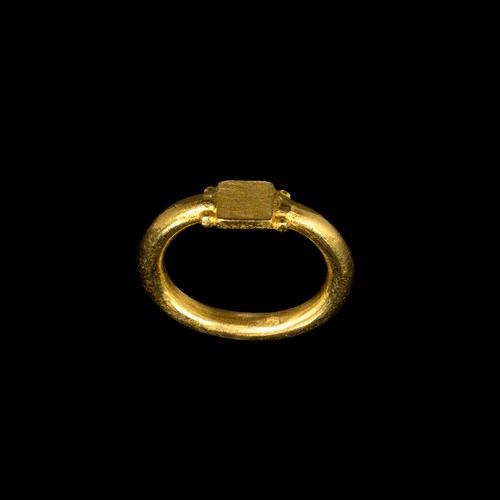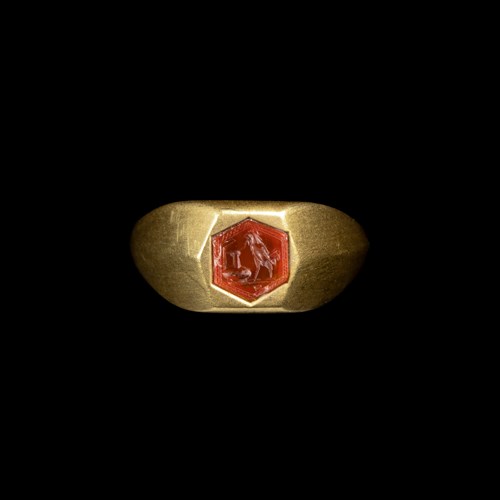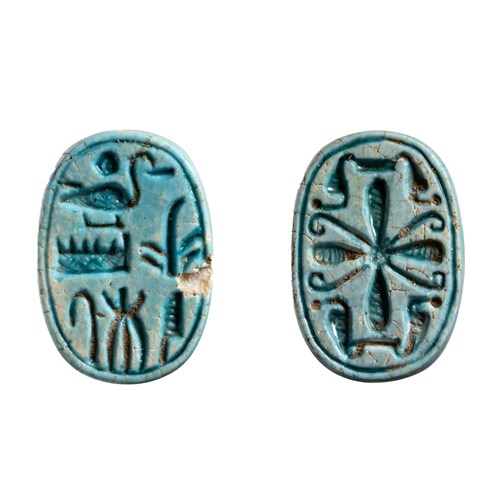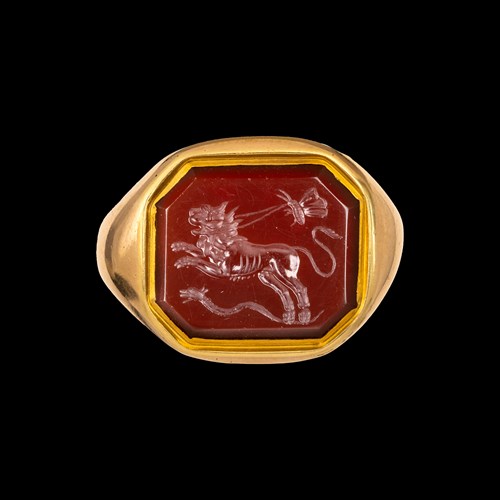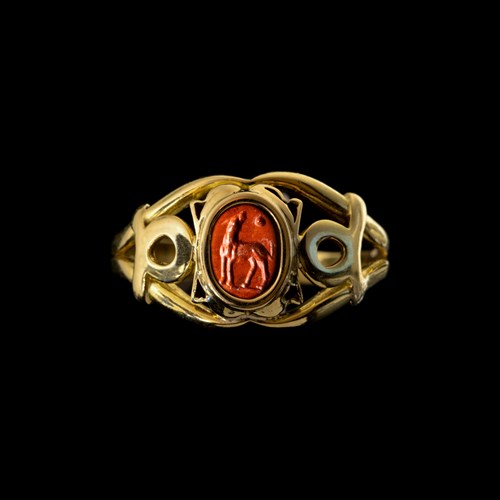Marketplace
A Large New-Kingdom red jasper Udjat-eye.
A Large New-Kingdom red jasper Udjat-eye.
Date 1550-1070 BCE
Period New-Kingdom
Origin consignment, London
Medium red jasper
Dimension 2 x 2.9 x 0.7 cm (0³/₄ x 1¹/₈ x 0¹/₄ inches)
The fine engraved details are present in both sides. The eyebrow lign finely engraved.
Beautiful conservation. Pierced lenghtwise.
The udjat amulet is first found in the later Old Kingdom and continued to be produced until the Roman Period. It is the best-known of all protective amulets and was found in greater numbers on mummies than any other amulets. It was also worn by the leavings. The udjat (the intact, complete) refers to the eye of Horus the Elder, the Celestial falcon and great creator god whose right eye was the sun and left eye the moon. It is usually considered to represent the left 'lunar' eye of Horus, plucked by Seth and then restored by Thoth – a reference to the moon being 'injured' as it wanes and 'restored' as it waxes each month. Yet, the term might also apply to the right 'solar' eye that was never injured.
At its most basic shape, the udjat is a human eye with eyebrow, but beneath the eye it has a drop and a curl to imitate the markings on the head of the lanner falcon.
According to the Osiris myth, Horus offered the healed eye to his dead father and so powerful as a charm it was that it restored him to life.
This explains the role of the udjat in the funeral ritual which is to ensure the revitalization of the deceased and the continuation of good health in the afterlife. The udjat was also the motif impressed upon the plate which covered the incision made by the embalmer when he eviscerated the body to avert evil’s entrance into the corpse and to help magically heal the wound.
References
Carol A. R. Andrews, “Amulets”, in The Oxford Encyclopedia of Ancient Egypt, edited by Donald B. Redford, vol. 1 (New York, NY: Oxford University Press, 2001): 75-82.
Carol Andrews, Egyptian Amulets (London: British Museum Press, 1994).
Beautiful conservation. Pierced lenghtwise.
The udjat amulet is first found in the later Old Kingdom and continued to be produced until the Roman Period. It is the best-known of all protective amulets and was found in greater numbers on mummies than any other amulets. It was also worn by the leavings. The udjat (the intact, complete) refers to the eye of Horus the Elder, the Celestial falcon and great creator god whose right eye was the sun and left eye the moon. It is usually considered to represent the left 'lunar' eye of Horus, plucked by Seth and then restored by Thoth – a reference to the moon being 'injured' as it wanes and 'restored' as it waxes each month. Yet, the term might also apply to the right 'solar' eye that was never injured.
At its most basic shape, the udjat is a human eye with eyebrow, but beneath the eye it has a drop and a curl to imitate the markings on the head of the lanner falcon.
According to the Osiris myth, Horus offered the healed eye to his dead father and so powerful as a charm it was that it restored him to life.
This explains the role of the udjat in the funeral ritual which is to ensure the revitalization of the deceased and the continuation of good health in the afterlife. The udjat was also the motif impressed upon the plate which covered the incision made by the embalmer when he eviscerated the body to avert evil’s entrance into the corpse and to help magically heal the wound.
References
Carol A. R. Andrews, “Amulets”, in The Oxford Encyclopedia of Ancient Egypt, edited by Donald B. Redford, vol. 1 (New York, NY: Oxford University Press, 2001): 75-82.
Carol Andrews, Egyptian Amulets (London: British Museum Press, 1994).
Date: 1550-1070 BCE
Period: New-Kingdom
Origin: consignment, London
Medium: red jasper
Dimension: 2 x 2.9 x 0.7 cm (0³/₄ x 1¹/₈ x 0¹/₄ inches)
Provenance: Old private collection of a Lady, 1980s-1990s
More artworks from the Gallery



